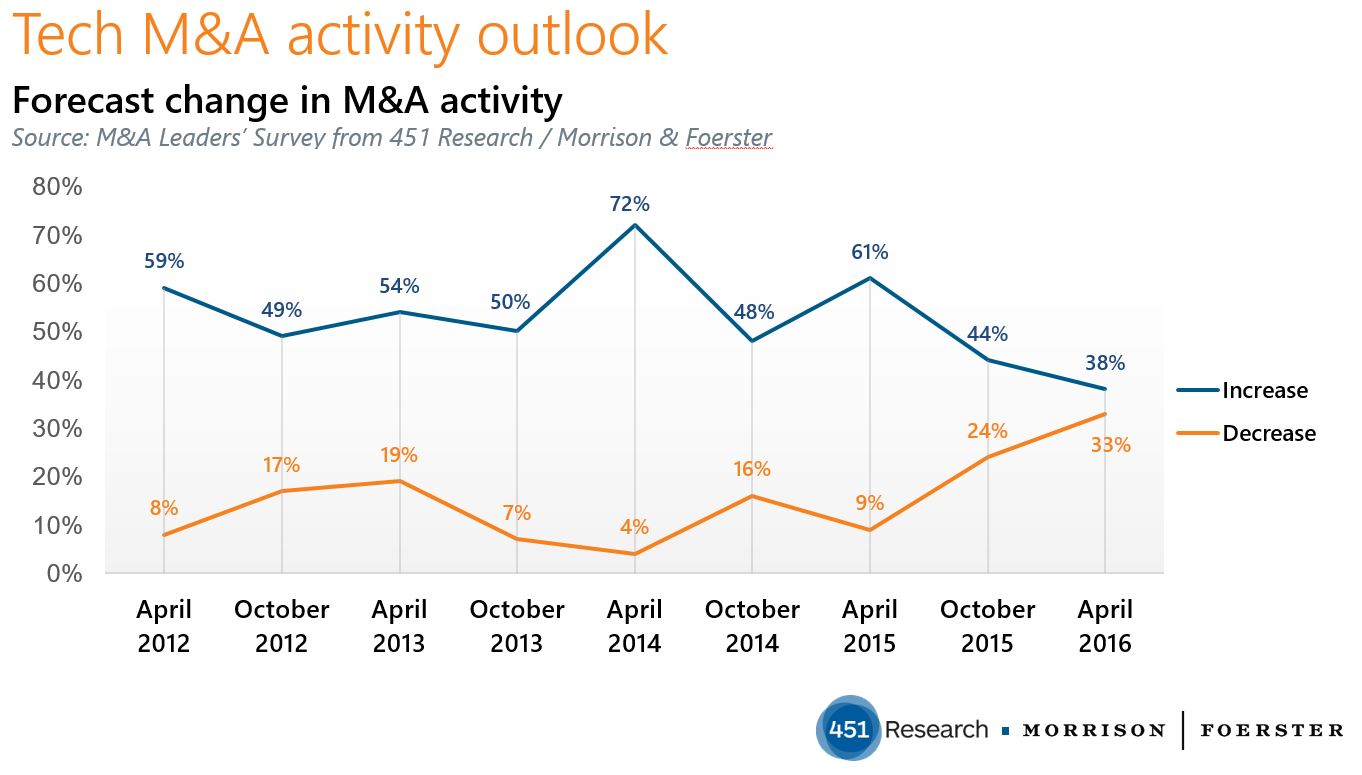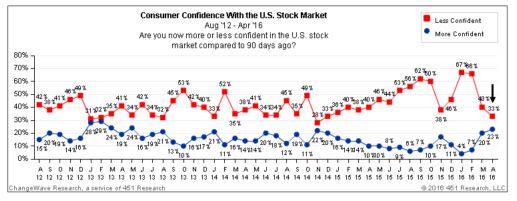Contact: Brenon Daly
Tech M&A spending in April slumped to its lowest total in 15 months, as buyers either looked to pick up bargains or stepped out of the market altogether. The $18bn in total deal value recorded in 451 Research’s M&A KnowledgeBase for the just-completed month comes in at less than half the average monthly tally from last year’s record run, further lowering the post-peak levels we’ve already recorded so far in 2016.
Many of the transactions announced in April also indicated how acquirers have swung to ‘value’ – rather than ‘growth’ – buys amid a broad slowdown in tech, particularly among its old-line vendors. Both of last month’s largest acquisitions valued the targets, which were each founded around 1990, at just 1x trailing sales. (The paltry multiple for both Lexmark and Polycom reflects how the tech industry has left behind many of its sizable-but-shrinking pioneers.)
More broadly, four of the 10 largest deals went off at less than 2x trailing sales, according to the M&A KnowledgeBase. Also putting pressure on overall multiples were greying companies divesting businesses that they decided not to support at a time when growth is difficult to find. CA Technologies, Teradata, HP Inc and Vodafone all punted businesses last month. The only real above-market valuations among April’s big prints were awarded to more recently founded SaaS providers, with Cvent getting 8x trailing sales in its take-private and Textura garnering more than 7x revenue in its sale to Oracle.
With four months now in the books, overall spending on M&A around the globe stands at just $90bn. That puts 2016 roughly on track for a full-year total of about $270m, which would be less than half the amount in 2015 and one-third lower than 2014. That lower level certainly squares with the results of our recent survey of dealmakers, in which a record number said they would be less active in the M&A market for the rest of the year. (See the full report on the M&A Leaders’ Survey from 451 Research and Morrison & Foerster.)
For more real-time information on tech M&A, follow us on Twitter @451TechMnA.


